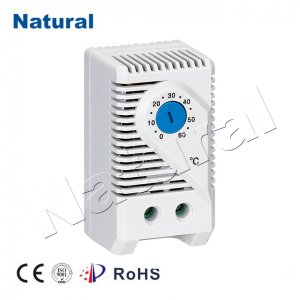Electric cabinet thermostats are essential components in various industrial and commercial applications. They play a crucial role in maintaining optimal temperatures within electrical enclosures, ensuring the safe and efficient operation of sensitive equipment. In this article, we will delve into the world of electric cabinet thermostats, exploring their functions, types, and key considerations.

Functions of Electric Cabinet Thermostats Electric cabinet thermostats are primarily designed to regulate the temperature inside electrical cabinets or enclosures. These cabinets house critical equipment like control panels, electrical components, and sensitive instrumentation. Maintaining an appropriate temperature range within these enclosures is vital for several reasons: Component Protection:Many electronic and electrical components are sensitive to temperature extremes. Excessive heat can cause them to malfunction or even fail. On the other hand, extreme cold can lead to condensation, potentially damaging the components. Energy Efficiency:Maintaining a consistent temperature reduces the need for excessive cooling or heating, leading to energy savings and increased efficiency. Safety:Overheating within electrical enclosures can pose fire hazards. Electric cabinet thermostats help prevent such situations by activating cooling systems or fans when temperatures exceed safe limits. Types of Electric Cabinet Thermostats There are several types of electric cabinet thermostats available, each suited for specific applications: Bimetallic Thermostats:These thermostats operate on the principle of differential expansion of two dissimilar metals. As temperature changes, the metals expand or contract, causing a mechanical switch to open or close. They are cost-effective and widely used in various applications. Electronic Thermostats:These thermostats use electronic sensors to measure temperature and control heating or cooling devices. They offer precise temperature control and often include features like digital displays and programmable settings. Capillary Thermostats:Capillary thermostats consist of a temperature-sensitive bulb and a capillary tube filled with a temperature-sensitive fluid. As the temperature changes, the fluid expands or contracts, activating a mechanical switch. They are commonly used in refrigeration and HVAC systems. Hydraulic Thermostats:Hydraulic thermostats use a temperature-sensitive fluid to control a valve or a mechanical switch. They are durable and suitable for harsh environments. Thermo-Electric (Peltier) Thermostats:These advanced thermostats use the Peltier effect to heat or cool the enclosure as needed. They are highly precise and often employed in laboratories and scientific equipment. Key Considerations for Electric Cabinet Thermostats When selecting an electric cabinet thermostat for a specific application, several factors should be taken into account: Temperature Range:Ensure that the thermostat’s temperature range matches the requirements of your application. Accuracy:Consider the level of temperature control precision required for your equipment. Environmental Conditions:Evaluate the environmental factors, such as humidity, vibration, and corrosive substances, that the thermostat may be exposed to. Mounting and Size:Choose a thermostat that fits within the available space in your electrical enclosure. Power Supply:Verify the compatibility of the thermostat’s power supply with your electrical system. Additional Features:Some thermostats offer features like alarms, remote monitoring, and programmable settings. Determine if these features are necessary for your application. In conclusion, electric cabinet thermostats are indispensable components for maintaining the optimal operating conditions of electrical enclosures. Choosing the right thermostat for your specific application is essential to ensure the longevity and reliability of your equipment. Whether it’s a simple bimetallic thermostat or a sophisticated electronic thermostat, understanding their functions and considering key factors will help you make an informed decision for your temperature control needs.